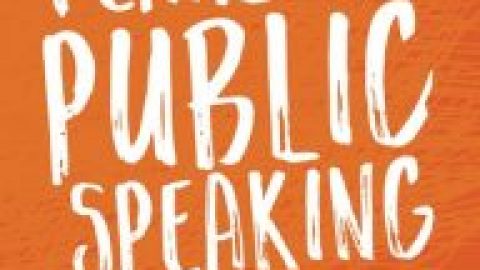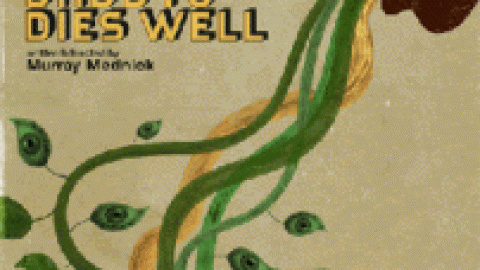Writing A Short Story by author Geoff Hoff, TipsOnWriting.net
What is a short story? It is a story that is shorter than a novel or a novella. Pretty simple, isn’t it?
Most short stories have a limited number of characters and locations, only one or a few conflicts, and a single plot. (There are many examples I could give, however, that go against any of these restrictions.) I like to think of a short story as a narrative sketch or study of events, where communicating a central point or idea is more important than delving into specifics.
There are as many ways to approach writing a short story as there are variations on what a short story can be. Below is one approach, using five steps. Keep in mind, the particulars of these steps often happen all out of order and on top of each other, so don’t be tied down to any notion of a formula. This is about creativity, not rules. Don’t get stodgy.
In this process, imagination is key. Close your eyes and consciously create the people, places, and circumstances. Use as many of your senses as possible: sight, sound, smell, touch, and taste. That’s not just an apple. It is a red piece of fruit that snaps when you bite into it. The skin is smooth, the inside firm and wet, and sweet liquid drips past your lips onto your chin after that first crisp bite, releasing a subtle, earthy aroma. Imagine that!
Step 1. Come up with an idea (or chose one from a pile of ideas): If you don’t have any ideas, spend a couple days journaling. Not the “I had a cup of tea, then I washed the cup” journaling, the free-form, stream-of-consciousness type. Write or type randomly for ten minutes, even if what you’re writing is simply, “I don’t have an idea. Nothing is coming to me.” After a few days of this, your mind will spontaneously come up with ideas that will surprise you. There are other techniques to get the mind in gear, but that’s a powerful one to get you started.
Step 2. Sketch out your beginning, middle, and end: Once you have your idea, map out the beginning (an event or circumstance that sets something else in motion,) the middle (what is set in motion develops … sometimes in surprising ways), and the end (the consequences of what has been set in motion are realized. This doesn’t necessarily mean resolved. Many wonderful stories, such as Stockton’s The Lady or the Tiger, have no resolution.)
Step 3. Imagine your characters and setting: Give your characters quirks, likes, and dislikes—this is how to make them human. Again, use the senses. How do they dress? What do their fingernails look like? Be specific.
For example, John has rough skin on his face, which is darkly and unevenly tanned. He breathes audibly through his mouth and wears a strong, floral cologne that fills the air in any room he enters. Etc. Much of this will not end up in the story itself, but the more you know your people, the more alive they’ll be to your reader.
Do the same with the setting or settings. Get to know the area, experience it in your mind with such a detail you could actually walk around in it.
Step 4. Write a stream-of-consciousness pass: Once you know all this information, the story will be fairly well-formed in your mind. You probably know it well enough to relate it to a friend as if it were something you witnessed or experienced. Sit down and start writing. Don’t worry about grammar, about finding the exact word, about brilliance. For this pass just start at the beginning of the story you’d tell your friend and don’t stop until the end.
Then, let it sit for a while … how long is up to you.
Step 5. Rewrite: Trim, shape, and hone that pass. Now you can worry about grammar, proper sentence structure, the flow of the piece. Spend time to find that perfect word to describe the sensation rippling through your hero’s spine.
Trim what isn’t necessary from the story. Be brutal. Anything that doesn’t propel the main thrust forward can go. It is often hard for a writer to trim his work, but it’s necessary. It’s a good practice to create a “dump file” where you can save the bits you don’t use in this story, so it’s not like killing the passages, it’s just setting them aside for the moment.
If something isn’t clear, add detail. Some writers read their stories aloud to find places where the language doesn’t flow well.
Polish it. Check spelling.
This part of the process can take several passes. … or, if you’ve done your imagining well, it will only take one or two.
The process of writing a short story is just that: a process. Don’t become pedantic and make it into a rule or formula. The whole point of the exercise is creativity. Let it flow and shape itself to your very own special, unusual, illogical, unwieldy beast.
Now, go write.
Geoff Hoff is a best-selling author (the satirical novel Weeping Willow: Welcome to River Bend) who writes how-to writing guides (On Writing With a Partner, On Writing a Short Story with writing partner, Steve Mancini). Hoff and Mancini will be giving an online course, “You Can Write a Short Story,” starting Thursday, January 14.
Tags: Geoff Hoff Moving Write Along: Advice from the Experts Short Story Steve Mancini Tips on Writing Weeping Willow: Welcome to River Bend Write On! Writing










